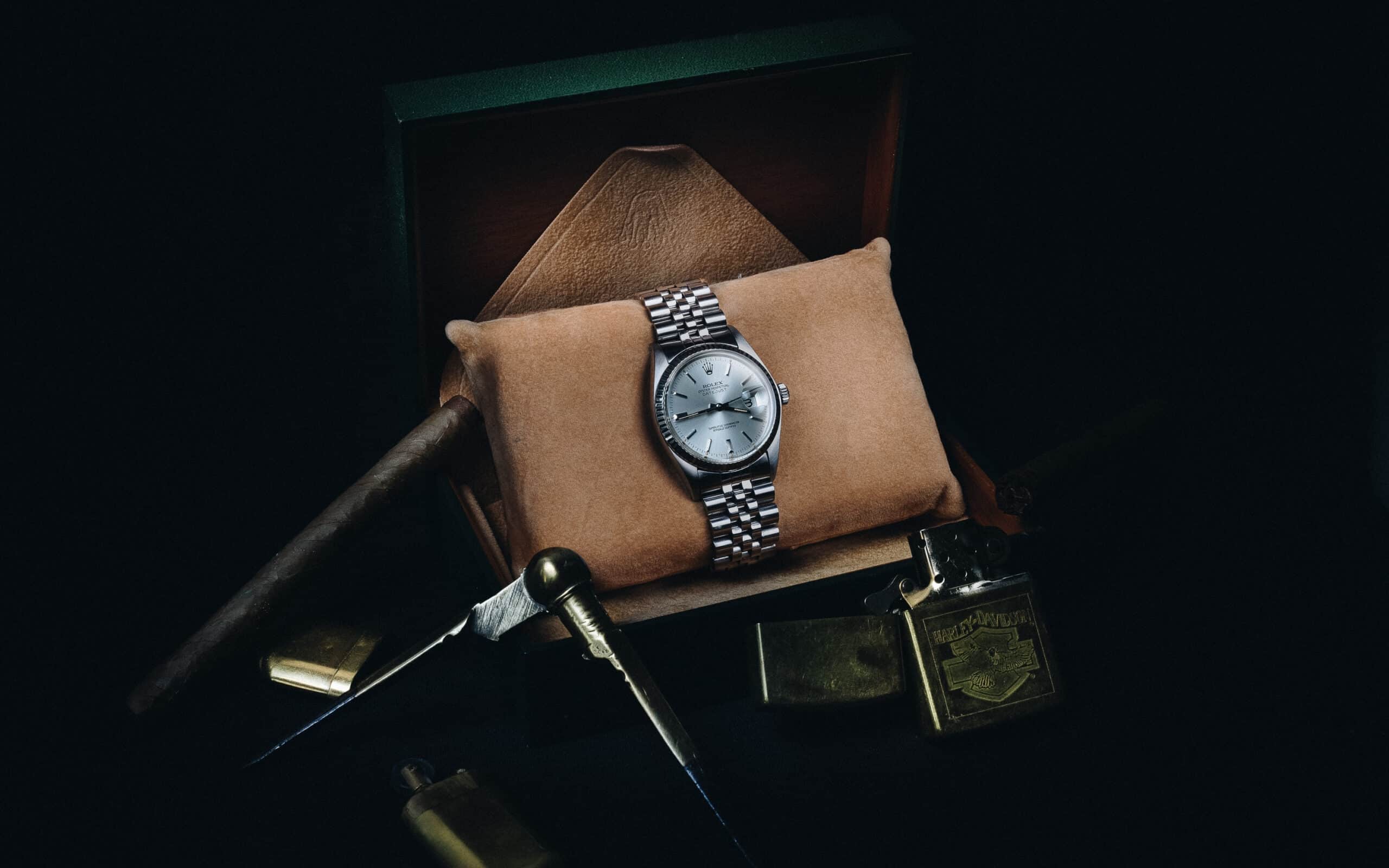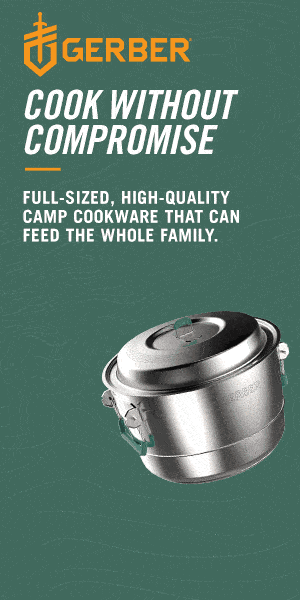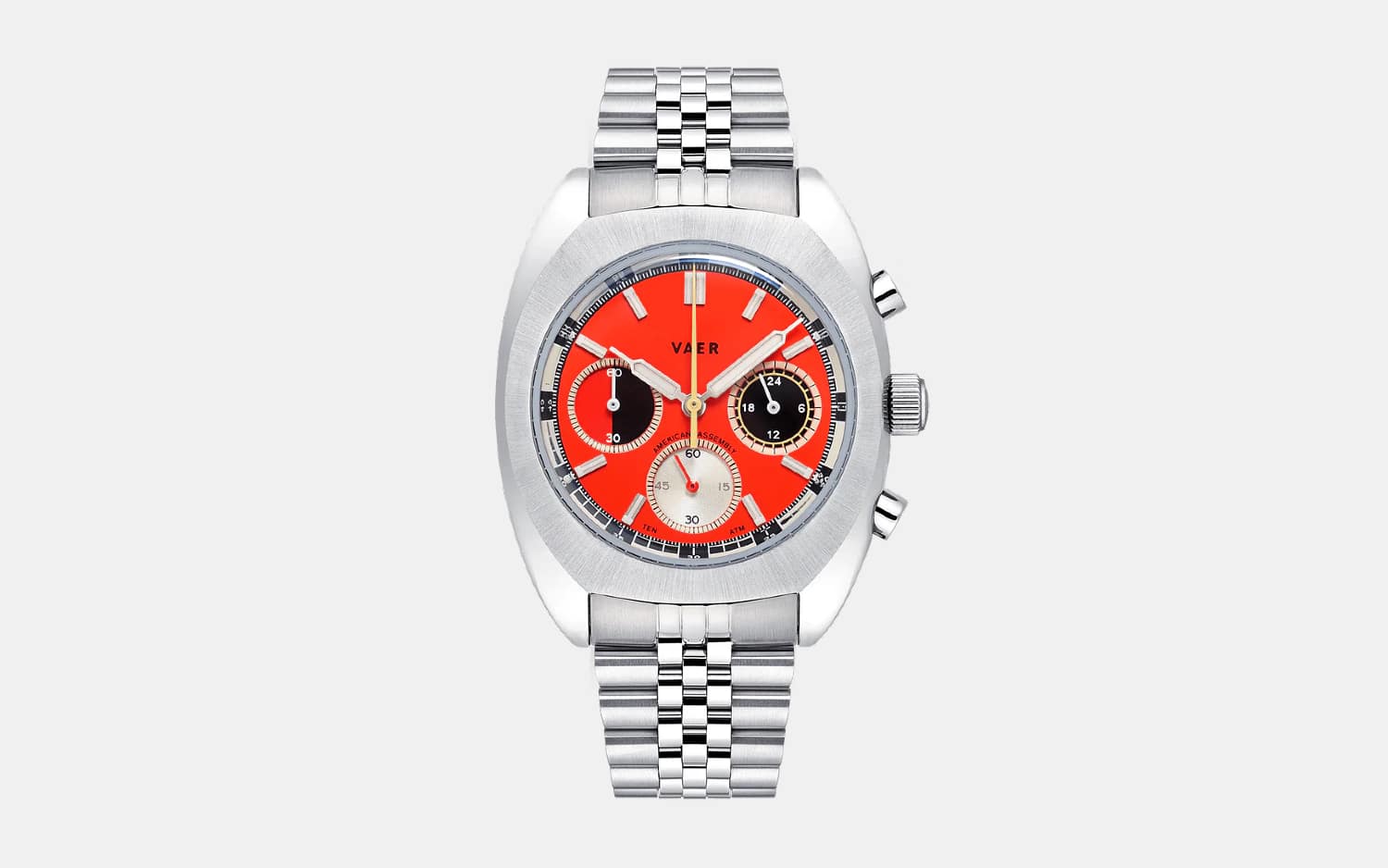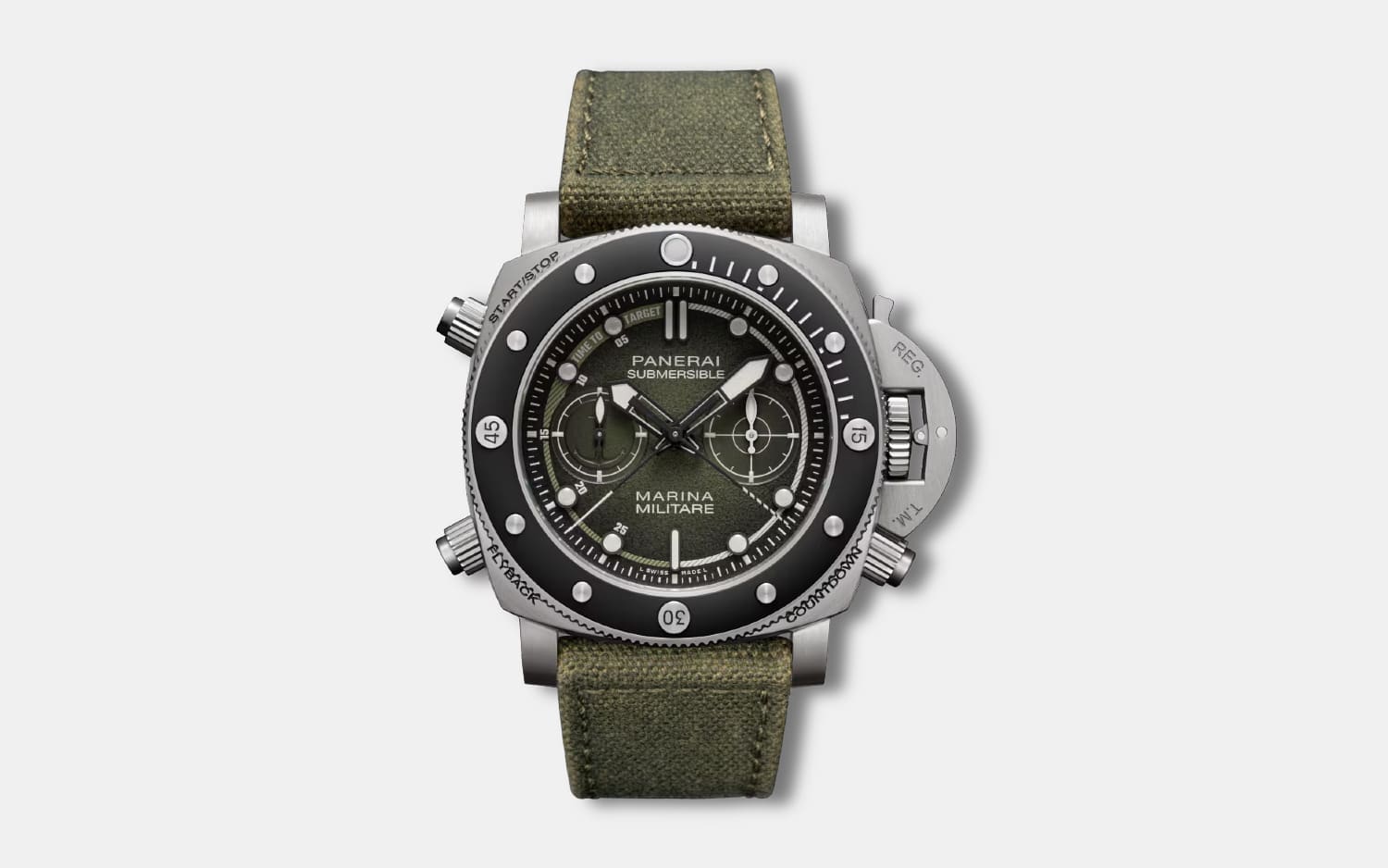Advanced techniques like 3D printing have vastly improved the watches in the fake Rolex market. Many mid-level counterfeits are indistinguishable from authentic timepieces at first (or even second) glance. So unless you are looking for a good copy, there are a lot more risky exchanges out there. And now that we’ve thoroughly unsettled you would-be buyers, we’re also here to help. We’ve got some trade secrets for you on how to spot a fake Rolex.
The crown is so frequently counterfeited, there’s likely more fake Rolexes out there than real ones. High-level forgeries can be pretty convincing, but often at around $1000, those looking to acquire a “super fake” are better off buying a genuine automatic from another luxury brand. Low-level fakes in the $50 range are easy to detect, while mid-tier copies can cost anywhere from $200 to $500. Since these are the most common, the following tips and tricks will apply to that category the most.
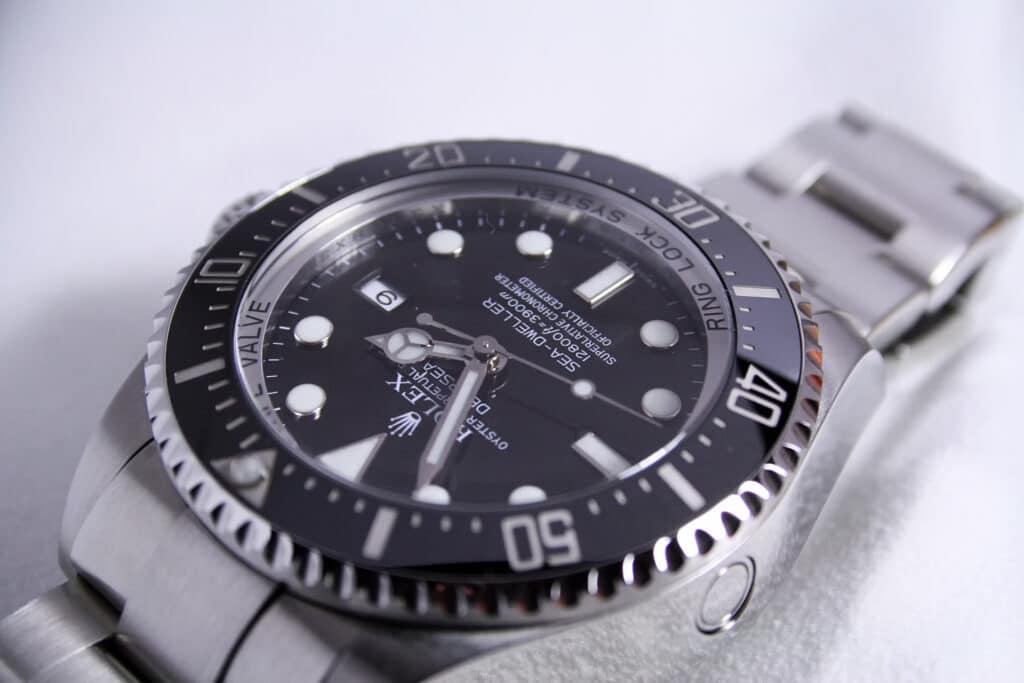
Magnify the watch’s finishing
Admittedly, Rolex timepieces are better finished in some parts of the watch than on others. Two specific places that must absolutely be flawless are the numbers on the bezel and the writing on the dial. Since Rolex laser engraves this text, it should be clean and sharp. Unless you’re Mr. Magoo, you shouldn’t have to squint to read it. Counterfeiters typically don’t have the resources to imitate this technique and will often use a shakier-looking acid etching. Regardless of how clean they manage to get the finishing, it won’t match the non-sandy, zero-drip lines of a laser marking, especially not under a magnifying glass.
In particular, make sure to check the text below the center. For many Rolex models, it’s where the words “Superlative Chronometer” are placed. It’s much smaller than the text above the center, where the crown logo, Rolex stamp, and watch model are indicated, and therefore more difficult to perfectly execute.
A third place you could check are the indices themselves. They should be pretty flat, not bubbly, with a gold outline. All the indices should also be the same height. This is easier to replicate than the text finishing. Since the difference can’t be detected without a magnifying glass though, a lot of counterfeiters opt for this shortcut.
Look up the serial number
Every single Rolex since 1987 has a unique serial number consisting of a letter followed by six digits. Thanks to that truth-telling device called Google, you can usually find out if the number marked on your watch is authentic. Look at the inner ring that connects the dial to the bezel. The serial number will be engraved at the bottom-center, by the 6 o’clock marker. Depending on your sight, you may or may not need a magnifying glass, but you’ll at least need good light. Try a few Google searches, including the word “Rolex” followed by the number, or just that serial number in quotations. It’s a surefire red flag (if not a downright flashing light) if you find that same serial associated with several watches, especially if they’re all different Rolex models. Another red flag? If your search results yield fake watch sites, naturally.
Just as you’d check on the dial text, examine the engraved serial number, and make sure it’s refined and crisp. A lot of fake Rolex makers will even use faint dots to apply the serial, so look out for a subtle needle-point or pixelated aesthetic. Additionally, on a real Rolex, the edges of the numbers look as if they glow a bit in the light, similar to how diamond cut edges shine when illuminated. No light? No-go.

Check the alignment of the inner ring
The word “Rolex” is also engraved all around the inner ring (the rehaut) that the serial number is on. This was introduced by Rolex between 2004 and 2007, depending on the model. Again, make sure that each iteration is sharp and neatly laser-etched, but also exactly aligned. On the left-hand side of the ring, the 7 o’clock marker and the 11 o’clock marker should each align perfectly with the R of its respective Rolex engraving. On the right, the 1 o’clock and 5 o’clock indices will align with the X of its closest engraving.

Laser etched crown on the sapphire crystal
If your Rolex is authentic and made after 2002, there’s a laser-etched logo, aka The Crown, on the sapphire crystal at the 6 o’clock mark. The caveat here is that it’s not easy to see with the naked eye. If you have the vision of a defense force personnel, you might just need a magnifying glass and the right light. The rest of us will likely need the help of a macro lens. The crown detail should be neatly etched with unconnected dots, which is difficult to duplicate. If you’re buying from a dealer online, ask them to send you pictures of this logo close up. Another note: If the crown has an “S” inside of it, this simply means that the crystal was replaced at some point. It’s a service part, but an authentically Rolex service part, so it’s good to go.

The date and cyclops
Related to finishing and alignment, the number on the date disc should be flawlessly printed and placed right in the middle of the window. There should be equal amounts of room above and below, and to the left and right of the printed number. The cyclops window over the date magnifies the date two and a half times. If the cyclops distorts the number at all, it’s probably not a real Rolex. Moreover, Rolex uses an anti-reflective coating here, so look out for blue light or reflection. Basically, if you can’t read the date, you’re looking at an imposter.
Examine the watch’s automatic movement
Even if the world’s best forger manages to somehow imitate every other feature on this list, he’ll likely fall short when it comes to the movement. Counterfeiters know that most of us don’t have professional watch tools, and therefore can’t look inside a timepiece to see the caliber within. It’s just not viable for a counterfeiter to even try and replicate the inside of a Submariner or an Explorer II, and this also applies to a good $1000 knock-off. Exquisite master movements are one of the main reasons Rolexes are so expensive, after all.

For those of you who are able to look at the movement of the watch, compare it to Google images and videos of authentic movements as a reference. Often, it’ll be obvious whether or not the system inside is a phony replica. Otherwise, analyze a few of its details. Fake movements will never be as refined as real ones. If plastic is used anywhere on the movement or if it isn’t engraved with the word “Rolex,” it’s a fake. If the jewels aren’t immaculately beautiful, it’s most likely a fake.
Rapid prototyping and 3D printing has made it possible for counterfeiters to clone Rolex movements and build frighteningly convincing “super fakes.” Still, the fine details are hard to copy. Moreover, if you’re buying a 90 percent accurate “Rolex” watch that’s around $1,500, why not just go for a nice Oris or a used Omega?
Test the movement—without looking inside
For those of us non-watchmakers out there, another great way to test the movement is by working the crown. When you unwind it, there should be little resistance, and should feel uninterrupted and smooth. In general, if an automatic watch’s crown feels grainy or if the movement of the hands are bumpy as you’re setting the watch, this means that the caliber isn’t exact. Rolex is known for precise and meticulous movements. So, if your Yachtmaster’s crown feels like there’s sand in between its cogs, it’s either the worst Rolex in history or, more likely, it’s a big old fake.
Disclosure: Clicking on these links and making a purchase may earn us a small referral fee, at no extra cost to you. Learn more here.
